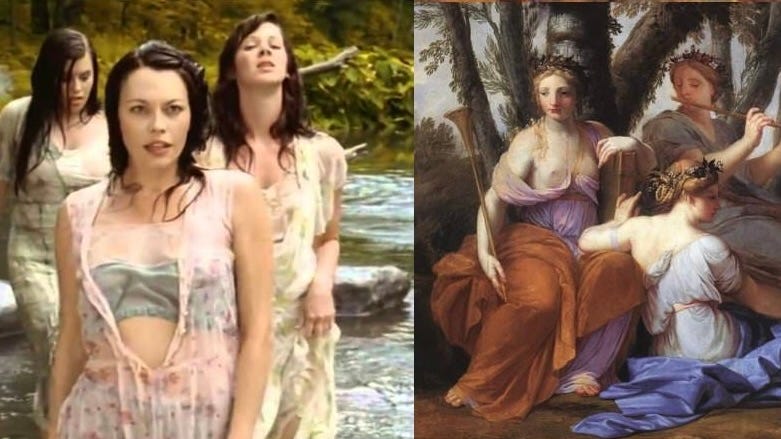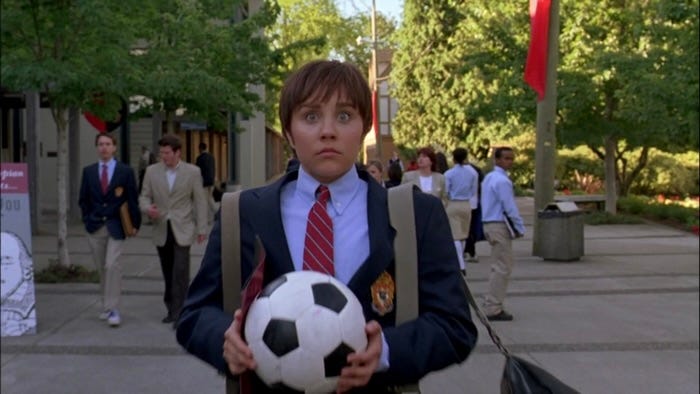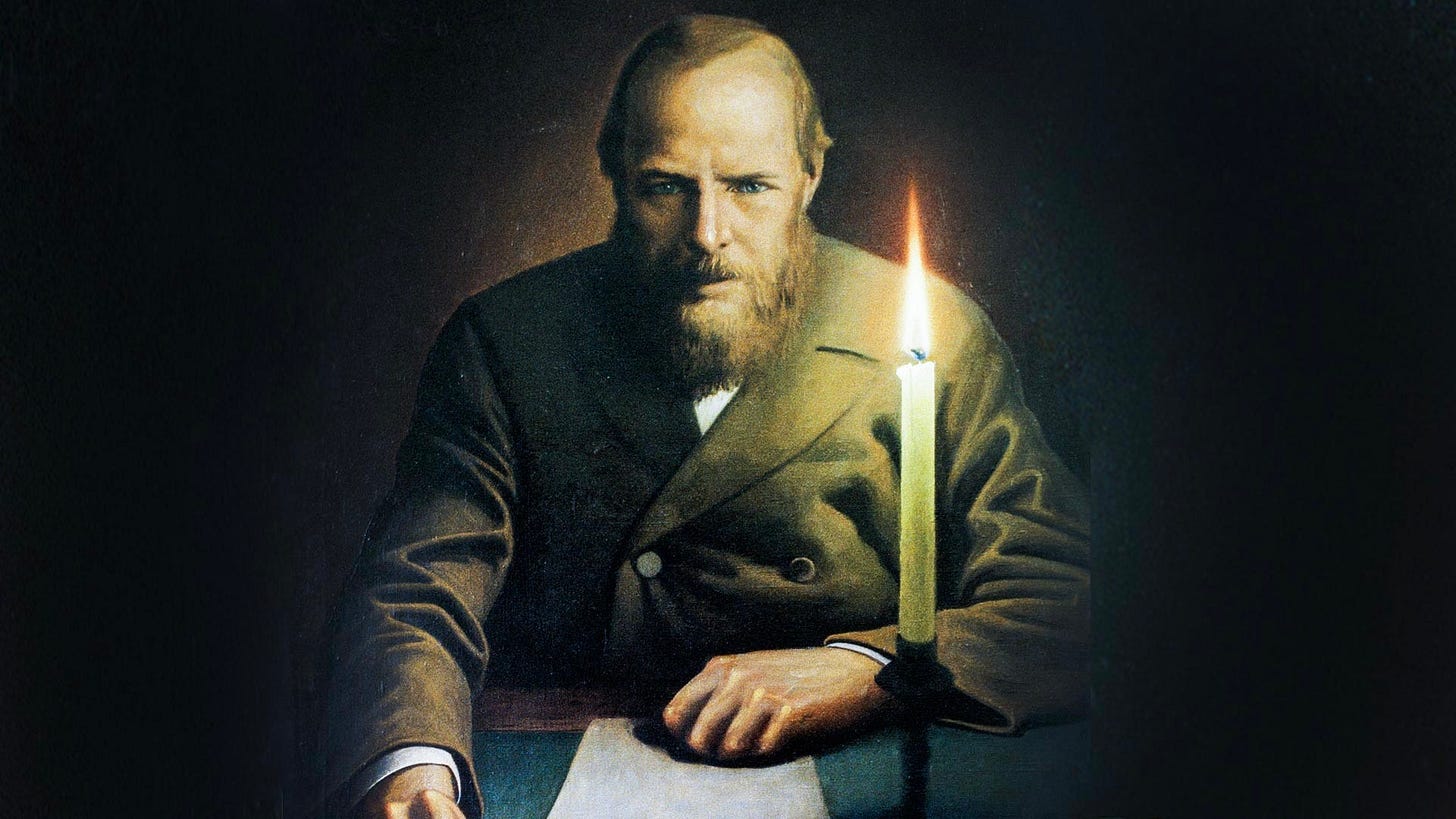Why Do We Keep Telling the Same Stories?
Modern films shaped by classic literature
The modern film industry thrives on spectacle. But behind the special effects and soundtracks, many of the most enduring movies trace their plot back to classic literature.
While some films openly admit to this, others hide their inspiration in plain sight. In either case, they both prove a point — that the work of minds like Shakespeare, Homer, and Dostoevsky is far more relevant than you might realize.
Today, we look at the hidden inspiration behind five modern classics of cinema, and how history’s great plays, poems, and novels still live on in unexpected ways...
Reminder: you can support our mission and get tons of members-only content for a few dollars per month:
Full-length articles every Wednesday and Saturday
Members-only podcasts and exclusive interviews
The entire archive of great literature, art, and philosophy breakdowns
The Lion King
At the heart of The Lion King is a Shakespearean tragedy.
A king is murdered. His brother seizes power. The rightful heir flees, haunted by grief and self-doubt. He eventually returns, but only after wrestling with the memory of his father and the weight of responsibility.
Although it ends in triumph rather than bloodshed, the architecture of the plot is unmistakable. Consciously inspired by Shakespeare’s magnum opus, The Lion King retains Hamlet’s central tension — the struggle between duty and fear, between what one is owed and what one must become.
Although it didn’t make the final cut, the scriptwriters even had Scar originally say “Goodnight, sweet prince” right before he murdered Mufasa. The line was originally delivered in a different context in Hamlet, but its inclusion in The Lion King was intended to be an easter egg to further solidify the connection between the film and the play that inspired it.
Apocalypse Now
Joseph Conrad’s Heart of Darkness left readers in awe at the horrors that transpired in the depths of the Belgian Congo. In Apocalypse Now, director Francis Ford Coppola shifts the setting from Africa to the jungles of Vietnam, but the core remains the same.
In both works, a man is sent upriver to confront another man who has gone beyond the bounds of civilization. Kurtz, whether ivory trader or army colonel (he has the same name in both the book and the film), becomes a symbol of what happens when conscience collapses under the weight of violence and unchecked power.
Apocalypse Now deepens the horror of Heart of Darkness, for where Conrad implies moral disintegration, Coppola makes it visible. Yet the question lingers in both: how thin is the line between man and monster — and what happens when the jungle overtakes the soul?
O Brother, Where Art Thou?
The directors of O Brother, Where Art Thou?, the Coen brothers, explicitly acknowledged Homer’s Odyssey as the inspiration for their film — even if, by their own admission, they hadn’t read it in full.
Despite it being set in 1930s Mississippi, echoes of Homer are unmistakable in the film. The main character Ulysses Everett McGill is a trickster and talker, separated from home and pursued by enemies. Along the way he encounters sirens, a one-eyed giant, and enemy suitors — though all refracted through the lens of Depression-era America, of course.
O Brother, Where Art Thou? doesn’t aim to be a faithful retelling of the Odyssey, but it does serve as a great reminder of why original audiences found Homer’s poem entertaining. It is also a testament to the fact that the Hero’s Journey — with its trials, transformations, and longing for home — remains just as powerful now as it was in the tales of Ancient Greece.
She’s the Man
The premise of She’s the Man might seem like a typical teen comedy — a girl disguises herself as her brother in order to play soccer. But the story is directly adapted from Shakespeare’s Twelfth Night, a play about dishonesty, disguise, and romantic misfires.
In both versions, a young woman named Viola assumes her brother’s identity and becomes inadvertently caught in a triangle of affection. Her disguise creates comic confusion, but it also reveals deeper questions about love, attraction, and the unique qualities of men and women.
By setting the story in a modern high school, She’s the Man gives the play a light-hearted spin, but Shakespeare’s original framework remains fully intact. The surface level details differ, but the comedy still unfolds exactly as the Bard intended.
Joker
Though director Todd Phillips named Taxi Driver and The King of Comedy as cinematic inspirations for the film Joker, many literary critics have pointed to a deeper influence: Fyodor Dostoevsky’s Notes from Underground.
Both works follow isolated men consumed by bitterness, resentment, and a growing desire to be seen. While the Underground Man spirals into self-justifying monologues, Arthur Fleck (who later becomes the Joker) collapses into madness and violence. The reasoning of both men is erratic, but never aimless — it reflects the logic of one who has lost faith in the world and now lives only to disrupt it.
While Joker is not a direct adaptation of Notes from Underground, it carries forward one of Dostoevsky’s most haunting questions: what happens when a man is denied dignity for so long that destruction becomes the only form of self-expression he has left?
Remember, you can support us and get members-only content every week: great literature, art, and philosophy breakdowns.
This weekend, we look at the role of danger in fairytales and myths, and why great authors of the 20th century despised the growing trend of sugarcoated storytelling.
In other words, why Tolkien hated Disney…
Paid readers can access our *entire* archive of premium articles right here.










Another fun one would be The Matrix and Plato's allegory of the cave.
I love these articles! They are always interesting and get me thinking. Thank you.